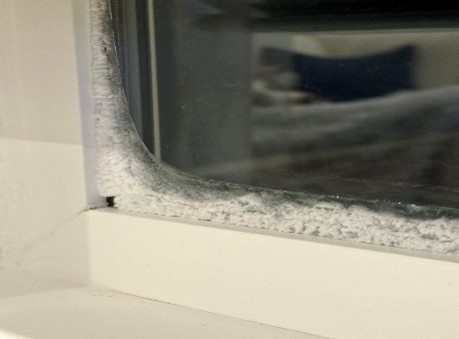When temperatures plummet and stay for several days, it is natural to have frost and ice buildup on windows and doors.
Windows and doors get colder than other areas of your home leading to natural condensation on the cold surfaces. This condensation can lead to frost and ice in extreme cold, but there are things you can do.
Your Heat Recovery Ventilator (HRV) and how it helps with humidity:
The Heat Recovery Ventilator (HRV) is the white metal box hanging in the mechanical room/area. Its job is not only to bring in fresh air and circulate it through the home, but also to manage the humidity of the home. Your HRV is essential in the management of your whole home comfort.
- Always keep your HRV ON.
- Do not set the humidity level on the HRV above 30% at any time. Keep the air circulation setting at 20/40 all year so you always have fresh air.
- Always use the HRV fan control in bathrooms and set it to 60 minutes before showering or bathing. Your HRV bathroom fan is on a timed switch and will automatically stop when the time runs out.
More tips to reduce frost and ice buildup on windows and doors:
- Reduce your HRV humidity setting to 20% in extreme cold snaps.
- Always have your hood fan on when using the stovetop or oven. This pulls moisture out of the home and away from windows. All Avalon homes have exterior venting fans.
- Open your blinds and curtains. Cool air is trapped behind window and door coverings and can increase frost and ice buildup.
When the cold snap is over be sure to quickly dry up all the excess water/moisture on windows, window ledges, window trim, doors, and floors.
Normal Frost Buildup:
These pictures are considered a normal amount of frost and ice buildup when Jack Frost comes to visit. If your buildup is at this level or more, please use the tips above to help reduce frost and ice buildup on windows and doors.


For any additional questions or concerns about this topic, please contact us at service@avalonmasterbuilder.com.


